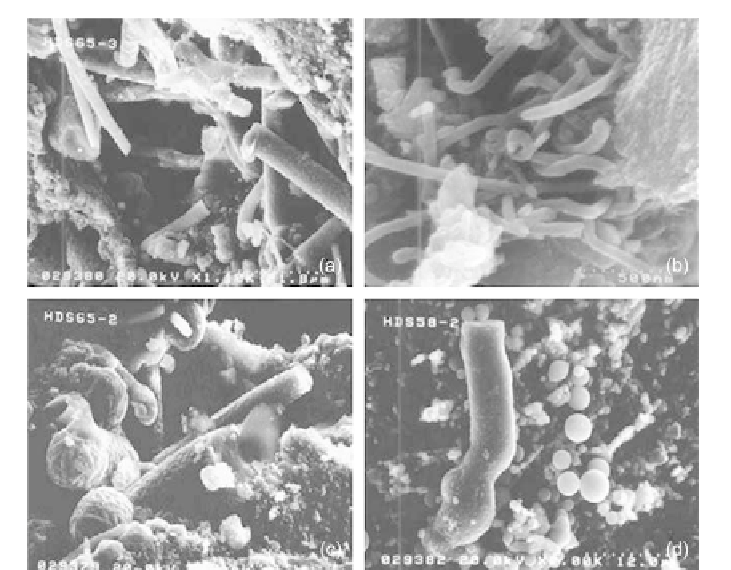Geoscience Reference
In-Depth Information
Figure 10.15 SEM images of filamentous carbon (a
c); and spherical particles (d).
Source: Photographs courtesy of B. Basavalingu.
calculated the size and the energy of the critical nucleation of diamonds, respec-
tively, in which all data are from the securable literatures about the diamond syn-
thesis in the HSRC supercritical fluid systems. More importantly, our theoretical
results are in excellent agreement with experiment data and other calculations from
the first principles.
In recent years, fluorescent nanomaterials are often called QDs, which have
wide application potential in biomedical imaging and sensing
[85
87]
. The semi-
conductor based QDs often pose cytotoxic and other environmental hazards, and in
this respect the fluorescent carbon nanoparticles (FCNs) are the best possible
replacement for the semiconductor-based QDs like InAs, CdS, and CdSe. Sun et al.
[88]
first synthesized these FCNs and they are considered as a brand-new class of
fluorescent materials. Several researchers are employing novel one-step approach
to synthesize FCNs. Similarly, one-pot hydrothermal synthesis of graphene QDs is
equally popular. In both cases, a variety of surfactants are popularly used to alter
the surface characteristics of these QDs and their photoelectric conversion the
under the near-infrared region
[87]
. Small graphene oxide sheets and polyethylene
glycol are used as the starting materials. This provides a highly cost-effective mate-
rial for solar energy conversion.

